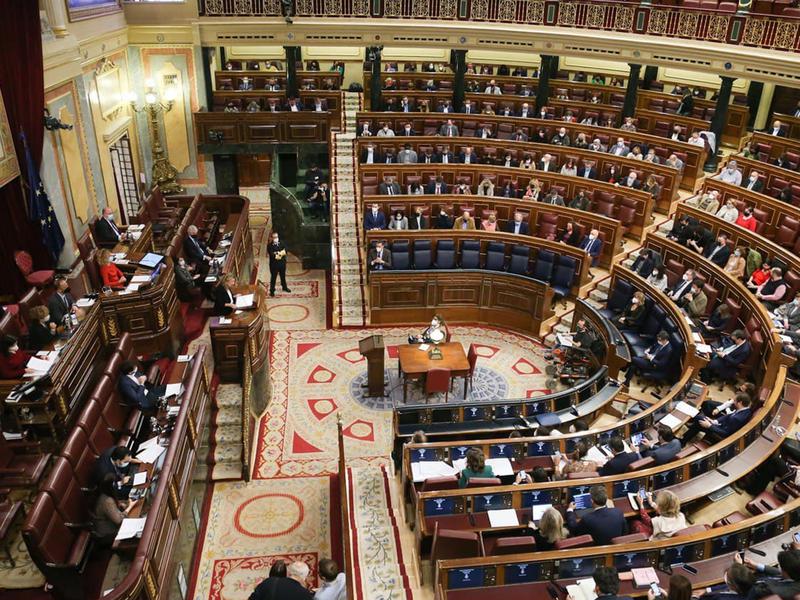Spain's July 23 election: How does it work? How does a new PM become elected?
Voters determine makeup of 350-member congress that chooses the next prime minister

Many consider July a month to relax, enjoy some days at the beach, and go on holiday. This year, it will still be possible to do so, but with a little bit of a twist. Spain will vote for its next congress, and therefore its future prime minister, on July 23, as well as choosing the makeup of the Spanish senate. But how exactly do elections to Spain's lower and upper houses work?
Voters elect 350 MPs to congress, which then chooses the PM from a candidate proposed by one of the political parties.
On the same day, even though not legally required by the constitution as it can happen on a different date, voters cast their ballots for 208 senators, four per province, thus overrepresenting rural areas.
Additional members of the senate are appointed by regional parliaments, with the number set at the end of each mandate. Therefore, it may vary from time to time. In the 2019 mandate, there were 57, one senator per province and one more per every million inhabitants.
The lower house, known as congress, is where laws are presented and debated before they go to the upper house, or senate, which can propose amendments and veto some legislation.
54 days
Spanish general elections occur at least every four years, but the PM, after meeting with the cabinet, can call a snap election.
The vote cannot be held earlier than 54 days after the decree calling for a vote is published in Spain's official gazette.
Ahead of the ballot, there are 15 days of electoral campaigning, and the day before the vote there is an election blackout.
Elections can be called again if no PM is appointed, as happened in December 2015, which forced a new vote in June 2016, and in 2019, but once the new cabinet is up and running, there has to be at least a year since the last vote for a snap election to be called.
The voting system
Spain uses a closed list system, which means the various parties publish a fixed, ordered list of candidates for each constituency. Voters then vote for the list of candidates in congress put forward by the political parties rather than choosing a preferred individual candidate.
This is a form of proportional representation designed so that the makeup of the chamber resembles the voting preferences of the electorate at large. In other words, if, for example, 20% of people vote for a particular party, that party can expect to win approximately 20% of the seats in congress.
Parties need to gain at least 3% of votes cast (including blank ballots) in a constituency in order to have the possibility of gaining a seat. The seats in each constituency are distributed among the parties using the D'Hondt method.
Meanwhile, for the senate, voters may cast three votes, and although on the ballot paper candidates are grouped together by political party, when it comes to voting and counting, candidacies are individual – voters may vote for candidates from different political groups.

Catalonia's four constituencies
Seats are allocated in the congress with each of Spain's 50 provinces getting a minimum two seats, with the cities, Ceuta and Melilla, electing one MP each. The other 248 seats are spread among the provinces in proportion to the size of their populations. The regions of Spain's two biggest cities, Madrid and Barcelona, elect 37 and 32 MPs this year.
Catalonia has four constituencies corresponding to the four provinces: Barcelona, Girona, Lleida, and Tarragona.
As Barcelona has a much greater population than the other three, and the electoral system has to "ensure the adequate representation of all parts of Catalonia," it takes fewer voters to elect each MP in Girona, Lleida and Tarragona.
Catalonia's four provinces elect a total of 48 MPs to the congress.
Choosing a PM
One of the first jobs of the newly elected 350 MPs is to choose the next head of the Spanish government. Typically, the first name on a party's list for the Madrid constituency doubles up as their candidate for PM.
Within ten days after the opening session of parliament, the speaker must propose a candidate seeking enough support to be elected by lawmakers. The candidate tries to convince lawmakers to vote for them.
They have two chances. The first requires an absolute majority (at least 176 MPs voting in favor). The second, held two days later, requires a simple majority (more yes votes than no). If they fail to pick any candidate, not necessarily an MP, for the post, a two-month period opens to repeat the procedure as many times as needed. If lawmakers do not meet the deadline, an automatic election is called for 54 days later, meaning that the second election day would take place around seven months after the first vote – something which already happened in 2015 and again in 2019.
Once appointed, the PM can then appoint ministers to the cabinet.
Achieving the 176 seats needed to form a majority is a tall order for any one party, which makes coalitions and minority governments a common outcome. The largest party doesn't necessarily form part of the government.